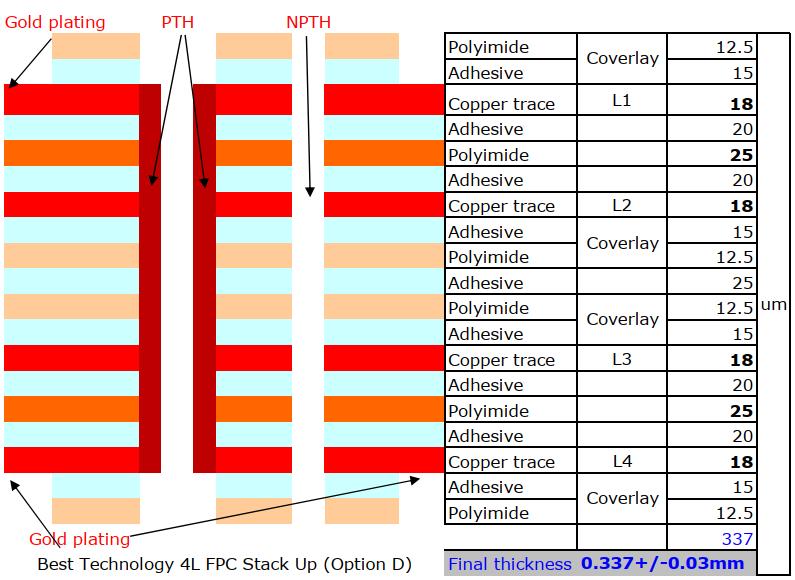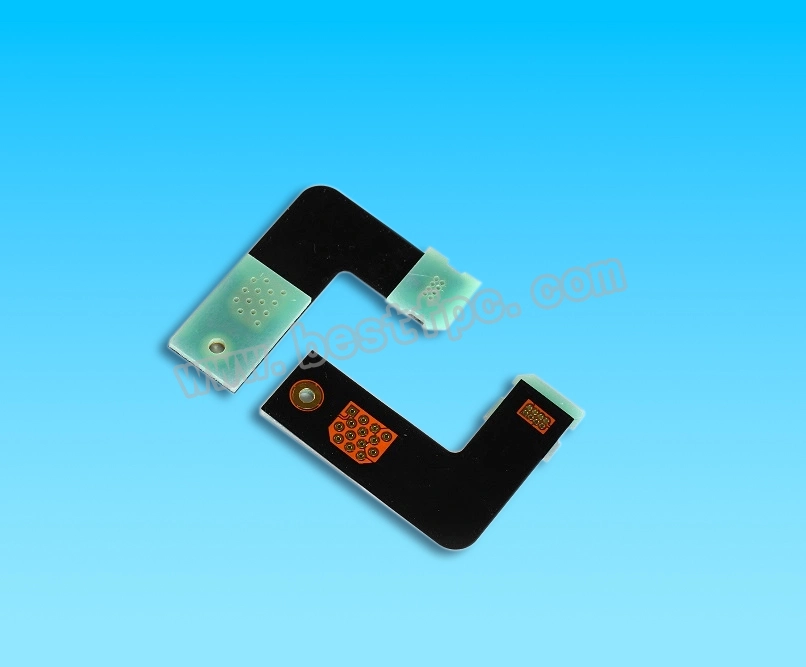Multilayer Flexible Circuits
When to use & Feature of Multi-Layer Flex
Eliminating the need for complex welding processes, multi-layer flex circuits board have tremendous functional differences in terms of higher reliability, better thermal conductivity, and more convenient assembly performance. And also, has excellent electrical properties such as a low dielectric constant. So multi-layer flexible circuits are an effective solution when the following purpose & characteristics are needed:
- Unavoidable crossovers
- Elimination of crosstalk
- Ground and power plane applications
- Used for EMI, RF shielding applications
- Through-hole assembly
- Specific impedance controlled
- Up to 10 or more conductive layers
- Unbonded regions to increase flexibility in bend region
- Increased circuit density: Multilayer high circuit density system can handle multiple conductive layers to save space
- High components density
- Other customer-specified electrical requirements
- Ideal for the aerospace and defense markets
Multi-Layer Flex Circuit Structure / Stack up
Here is stack up of a normal 4-layer flexible circuit:

There are more complex interconnections, layer design surface mounting. Click to see more stacked multi-layer flex circuits.
![]() stack up of multi-layer flex circuits
stack up of multi-layer flex circuits
Multi-layer flexible printed circuit boards can be further divided into the following types:
1) Normal stack up All the layers are laminated to each other, without separating between each layer, it loses its inherent flexibility after lamination. The more layers circuit has, the less flexible circuit will be.
2) Unbonded/Separated stack up: Each layer or several layers are separated from each other in the center portion, so they are unbonded in the center area and electronically connected at both end of the flexible circuit. The flexibility is much better than normal stack-up.


Multi-Layer Flex Circuit Materials:
Multi-layer flex also allows for localized areas where stiffeners, pins, connectors, and components may be added, so the material is the same as double-sided flex circuits, all have core material, coverlay, stiffeners, PSA EMI/RF shielding.











.png)
.png)
.png)
.png)
.png)
.png)

.png)

